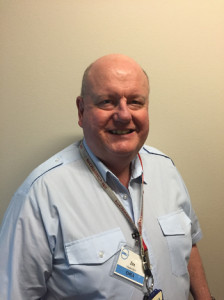While in many respects the role of the commercial data centre has not greatly changed — massive resources pooled in one place — the market certainly has. Telecity, currently in international merger mode with Interxion, recently announced investment in its fourth Dublin data centre. Dub4 in Blanchardstown will be state of the art and that certainly includes best possible energy performance.

At about 10% to 20% of the power requirement of disks, solid state energy saving is a major driver as the SSDs themselves head over time for commodity status. They do generate heat when in banks and may need cooling but there is a trend towards adding heat sinks to SSDs which will partially obviate that, Jim Hearnden, Dell
Rent included
“One total change in our business is that traditionally, power was included in your rent per square foot,” said Maurice Mortell, VP for Emerging Markets of Telecity Group managing director in Ireland. “You could not have that sort of open-ended draw for some years now and co-location rates today start with power, not space. In recent years a very keen appreciation of power has developed in the market — usage, availability, total costs. Here in Ireland the business market looks at CER Pass Through costs and where we stand in the European landscape when assessing potential suppliers. Clients looks at our PUE, which is an index of overall energy efficiency performance. I think the data centre market is going more and more towards a straight price per kilowatt.”
Mortell points out firmly that data centres are well managed from the energy point of view because that is key to competition. “In the industry we believe that out there in the ICT wild there is about 10KW consumed for every 1KW we draw and a huge proportion of it is badly and inefficiently used.
Pervasive efficiency
Designing for maximum energy efficiency has been pervasive across all ICT sectors for some years. It starts with the actual hardware, notably servers and data storage arrays which are the highest consumption category, but going from the chipset up. “We are on our 13th generation of hardware,” said Dell’s Jim Hearnden, EMEA power and cooling technologist. “Every new chipset from Intel over the years has seen a reduced power requirement, perhaps by 20 or 30%. The race to virtualisation in itself drove power savings.
“But then we consolidated servers in dense racks and today we are seeing a constant rise in memory, which has become something of a power hog. Yes, each unit is low power but when you add big slabs of it in today’s systems it becomes significant. You might have a CPU consuming 120 watts but add memory at say 4-5 watts per bank, maybe 10 watts for some high capacity banks, with multiple and increasing banks being added for today’s workloads,” says Hearnden.
“The top end of the market is moving away from rotating media towards solid state. That is for performance, but SSDs consume much less power than electric motors. On the other hand, there is still some reluctance to power them down in case they might not come back up, although top end SSDs are highly reliable in fact. But solid state is the future of the data centre, certainly for Tier 1 storage, although I see a place for spinning disks for some years yet. At about 10% to 20% of the power requirement of disks, solid state energy saving is a major driver as the SSDs themselves head over time for commodity status. They do generate heat when in banks and may need cooling but there is a trend towards adding heat sinks to SSDs which will partially obviate that.”








Subscribers 0
Fans 0
Followers 0
Followers